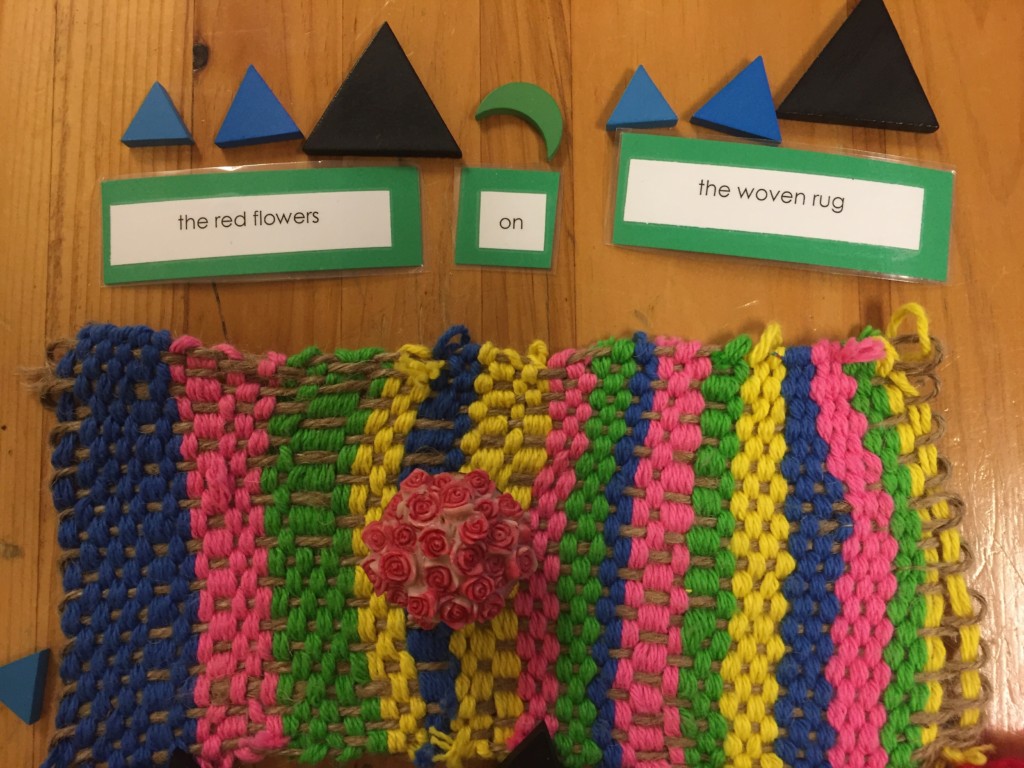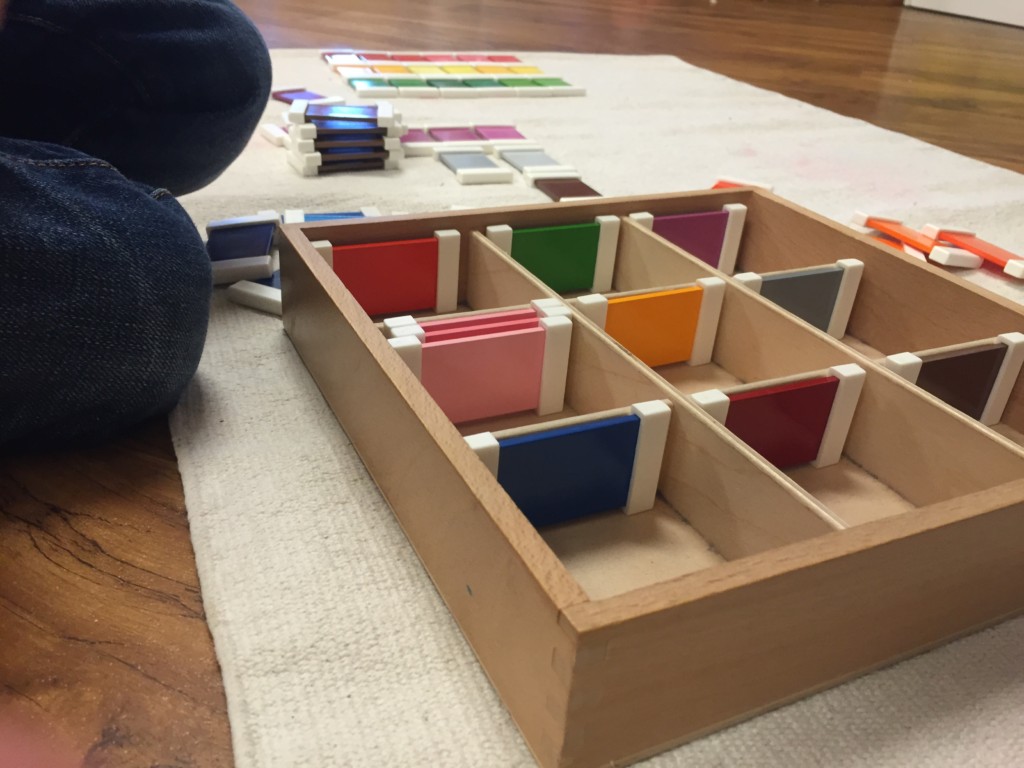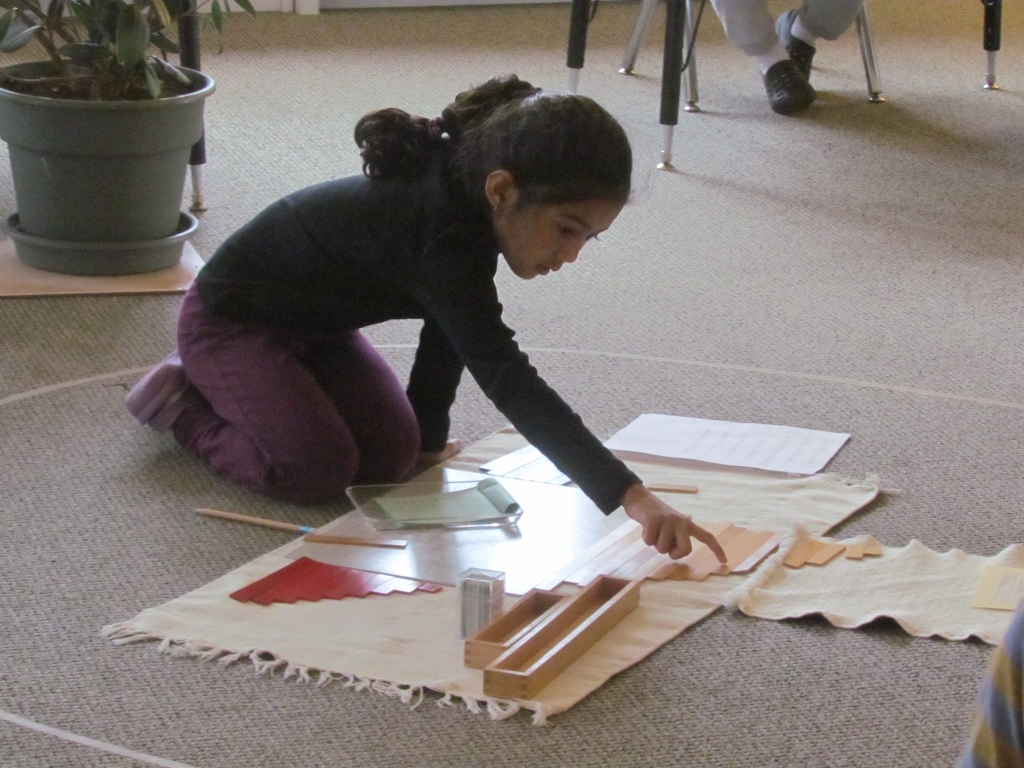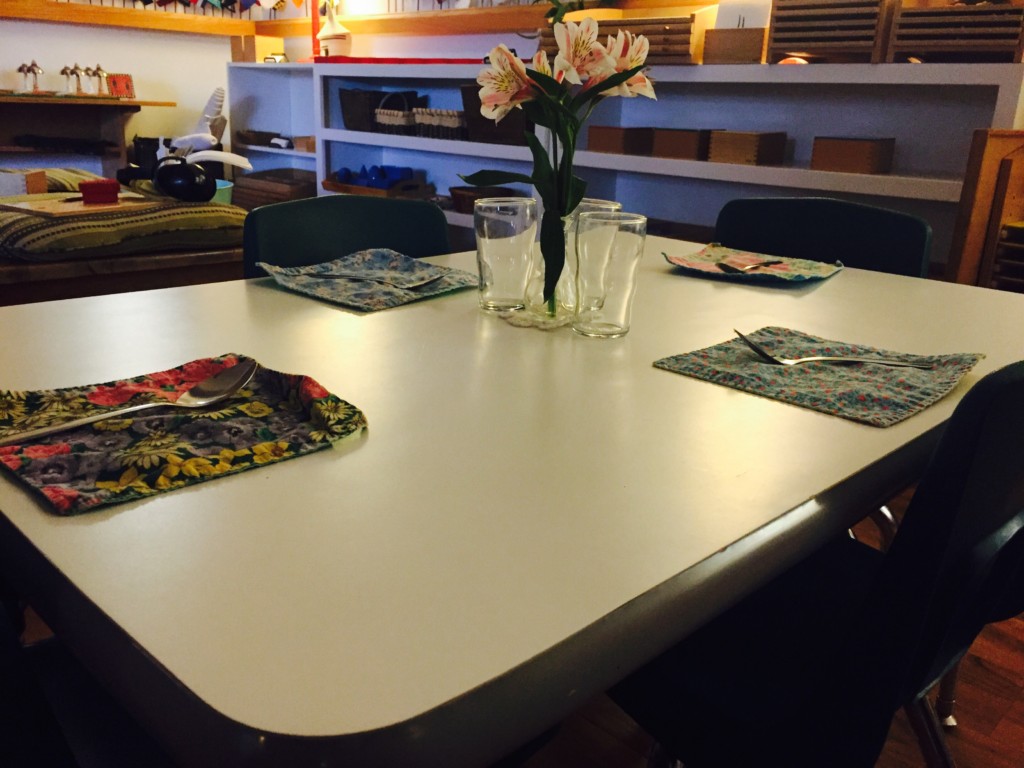A day in the life of a Raintree primary student
As the day begins…
Children arrive between 7:30 and 8:30, joining their classmates either inside in the classroom or on the playground. If the class is inside, children are encouraged to hang up their own coat, change into their slippers and put away their own materials. The greeting process differs slightly in each classroom depending upon the daily schedule. Check with your child’s teacher regarding schedule and greeting procedure.
In most classrooms, the day begins with a handshake so allow your child to enter independently if the teacher is not near the door when you arrive. One of the adults will greet your child, often with a handshake. This simple gesture not only reinforces a courtesy but is also a sign that your child is in our care.
If the children are in the classroom, you may fnd that your child’s teacher is giving a lesson. This is not a time to have a lengthy conversation with either the teacher or the assistant because their focus is on the children who are working in the classroom. If you have a question or comment keep it brief or jot down a note and place it in the teacher’s basket. The teacher will reply by phone or send an email later in the day.
During work time children move about the room freely choosing activities from the shelves that they are interested in and have had a lesson. They may work with the materials as long as they wish. Exploration and repetition are ways in which the children internalize the concepts.
The teacher plans lessons for each child based on the child’s readiness and interests. Through careful observation of the child at work, the teacher determines the appropriate time to give a lesson and what the lesson will be. Children are never interrupted when they are working by the teacher or the assistant, even to give a lesson; work time is sacred. Montessori’s famous quote, “Follow the child,” means that a teacher must be prepared to go in a completely different direction if the child shows more interest in another area of the classroom than what was originally planned.
Because repetition leads to internalization, new lessons occur with regularity but not on a daily basis. As the child’s work repertoire increases and work cycles lengthen, his independence grows and his day is filled with work of their own choosing, often expanding beyond a basic lesson. For example, a child gets a lesson in measurement and decides to measure everything in the room! No teacher would stop such a wonderful challenge as the child goes about the room, ruler in hand, pencil and list at the ready, to record the findings. Dr. Montessori recognized the best time to learn is when interest is heightened and this is one advantage our classrooms offer.
The child’s reason for, and way of, working is different from ours. Adults will usually choose to do things the most efficient and quickest way and to rush through or avoid anything labeled “work.” A child, on the other hand, is working (subconsciously) to master the activity and to practice and perfect her abilities. She may scrub a table in the classroom every day for weeks, then turn her attention to some other activity to master. We must not look upon this method as inconsistency or laziness but rather cumulative mastery of abilities. The child’s purpose is not to complete the task as much as to construct the self. (Michael Olaf, Te Child of the World).
Sometimes children are drawn to one area at the exclusion of others. The teachers can tell the difference between passionate exploration and “hiding out” in an area. Yes, children are allowed to pursue math lessons, for example, ad infinitum because the teacher knows that teachable moments especially those that come in streams are when the child is most receptive. A perfect metaphor would be how some people eat a plate of food. One will eat a little of each food item: a few bits of salad, then some of the main dish followed then by the vegetable, but others dive right in eating all the main dish, then the salad and finish with the vegetables. The result is the same: a full tummy and in the Montessori class, a full day!
Snack is typically an individual activity meaning that during work time the child may choose to eat snack when she wishes. She may eat with a friend or two at the snack table. It is her responsibility to set up the things she needs and clean up when she is finished which often includes washing her dishes, wiping her space at the table, sweeping under her chair and perhaps washing her cloth napkin. Everything that the children use in the classroom are real items whether it be glass, ceramic, or porcelain. In this way, children are respected and learn how to care for the beautiful items in their environment and experience the consequences when care is not given. “An adult works to perfect the environment, but a child works to perfect himself.” —Montessori
Outside time is either at the beginning of the morning or at the end. Check with your child’s teacher for the schedule. We go outside every day at Raintree unless it is raining, snowing or extremely hot or cold. It is important that your child has outerwear appropriate for outdoor play. As stated previously in this handbook, boots for gardening, hats/mittens and warm coats for cold weather, and sturdy, closed-toed shoes for the playground are essential for a child at Raintree. Montessori said, “There is no bad weather, only inappropriate clothing.” In the summer time the child’s outside time includes swim time.
Preparation for lunch is done by the children – setting tables with plates, glasses, cloth napkins, silverware and flowers. Children serve themselves either buffet style or family style. After lunch the children are responsible for cleaning up their own space.
Approximately half the children are nappers and go to the adjacent nap room and sleep on cots for about 1-1 1/2 hours while the resters roll out mats for resting on the floor listening to music or stories for about 30 minutes. Ten lights come on and children resume their work. When the nappers awake, they are invited to join their friends for afternoon work. Again, afternoon outside time is either at the beginning of the work cycle or at the end.
In the late afternoon (3:30-5:30), two new staff members arrive to work with the students spending a balance of the remaining day enjoying the out-of-doors and activities such as puzzles, arts and crafts, games, etc.
At Raintree there are nine primary classrooms, or Children’s Houses. All are full-day with a few reserved spots in each for half-day students. A complete set of Montessori materials make up the prepared environment of each Children’s House, and every Guide who directs the learning of the children holds certification from either the Association Montessori Internationale (AMI), or the American Montessori Society (AMS), the most respected Montessori training organizations. In addition, many of our staff have Master’s degrees in child-related fields, or areas of study which they bring to their work in the classroom.
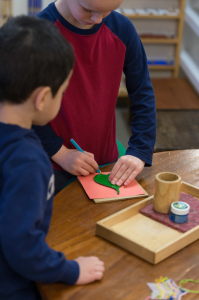 The prepared environment includes areas of practical life, sensorial, mathematics, language arts, science, art, geography, history and music. In each area the materials are laid out in sequence from the simplest to the most advanced. For example, the math area begins with the presentation of the long rods which teach one-to-one correspondence of the quantities 1-10 eventually matching the numeral with the quantity in the rods. From there a child is introduced to the quantity of zero, teens numbers, tens numbers, linear counting, the decimal system, addition, multiplication, subtraction and division, multiples of numbers, the squares and cubes of the numbers 1-10. All of these presentations are done with concrete materials. If a child comes to the end of the math sequence in the Children’s House, she would be ready for double-digit multiplication. When this happens, the child is invited to go to the elementary to receive a lesson on the chequerboard, a piece of Montessori apparatus which illustrates the algorithm of multiplication in a concrete way using beads, the same beads they have been using in the primary. With the chequerboard, the child can do problems that have up to four-digit multipliers and multiplicands into the millions.
The prepared environment includes areas of practical life, sensorial, mathematics, language arts, science, art, geography, history and music. In each area the materials are laid out in sequence from the simplest to the most advanced. For example, the math area begins with the presentation of the long rods which teach one-to-one correspondence of the quantities 1-10 eventually matching the numeral with the quantity in the rods. From there a child is introduced to the quantity of zero, teens numbers, tens numbers, linear counting, the decimal system, addition, multiplication, subtraction and division, multiples of numbers, the squares and cubes of the numbers 1-10. All of these presentations are done with concrete materials. If a child comes to the end of the math sequence in the Children’s House, she would be ready for double-digit multiplication. When this happens, the child is invited to go to the elementary to receive a lesson on the chequerboard, a piece of Montessori apparatus which illustrates the algorithm of multiplication in a concrete way using beads, the same beads they have been using in the primary. With the chequerboard, the child can do problems that have up to four-digit multipliers and multiplicands into the millions.
The sequences in each area of the environment are very deep. In the language area, for example, a child can continue to fine tune her reading ability or writing skills by going to the elementary library to check out books or write her own stories, plays or poetry. She can even learn to analyze language by getting lessons from the Guide in grammar and sentence diagramming.
Do we push children into doing this advanced work? No. In a mixed age classroom, the children are surrounded by others in the same noble pursuit of self-construction that one finds the toddlers engaged in. Seeing others working on interesting activities can often be the “carrot” that pulls children into an area, or through a sequence, but Guides are not focusing on “pushing” children. Raintree is a child-centered and individually paced experience, a personal journey for each child.
Some of the most important lessons in a Children’s House are the lessons of grace and courtesy. These are given in small groups, and they form the cornerstone of civility in a classroom, How to introduce a friend, how to close a door quietly, or how to borrow something along with many other grace and courtesy presentations develop emotional intelligence and make a classroom a loving community, a Children’s House. While academic skills are important, the development of emotional intelligence nurtures a child’s self-confidence and self-esteem. In the end, how a child feels about himself will make the difference in the kinds of choices he makes in the future.


